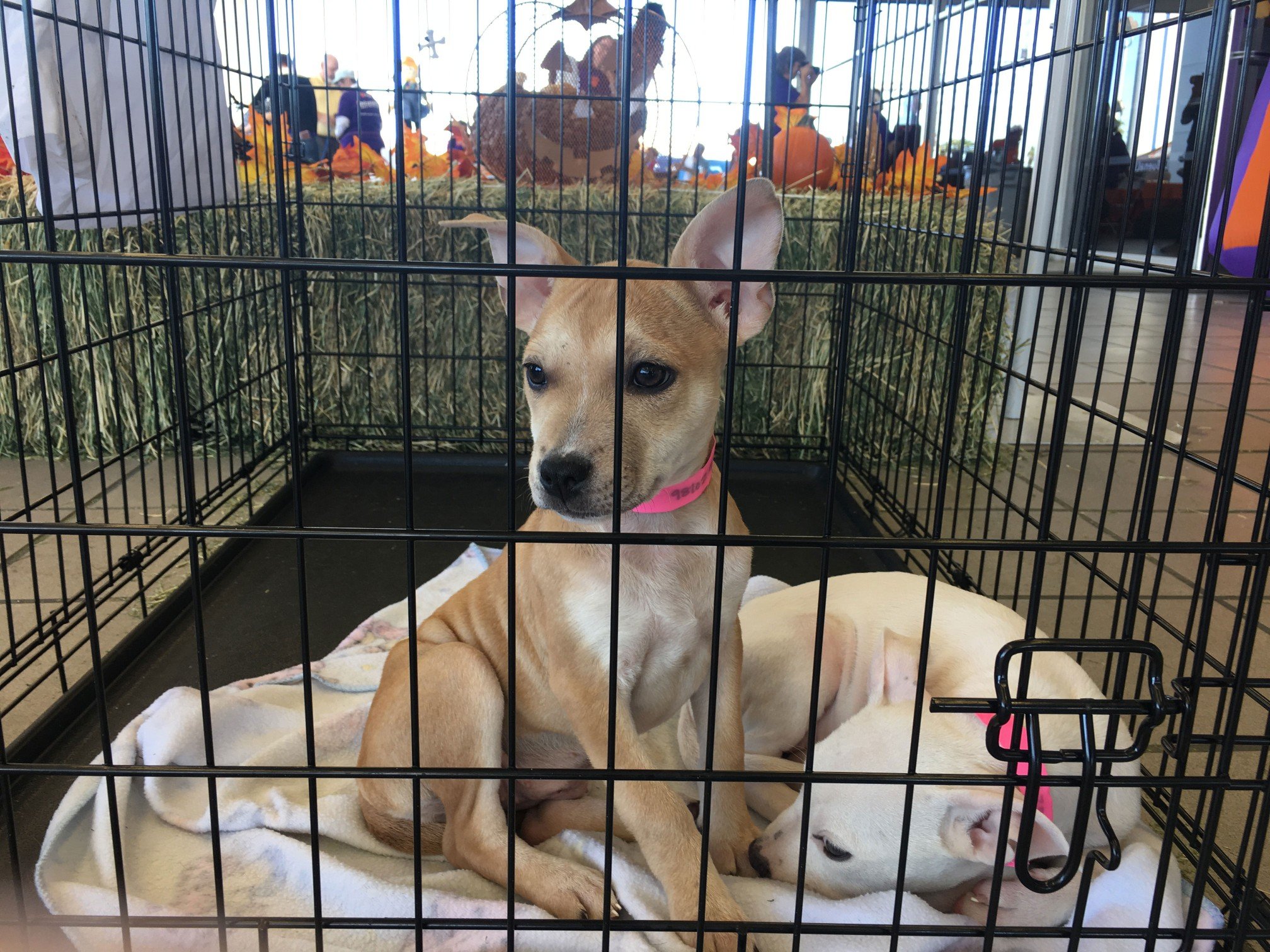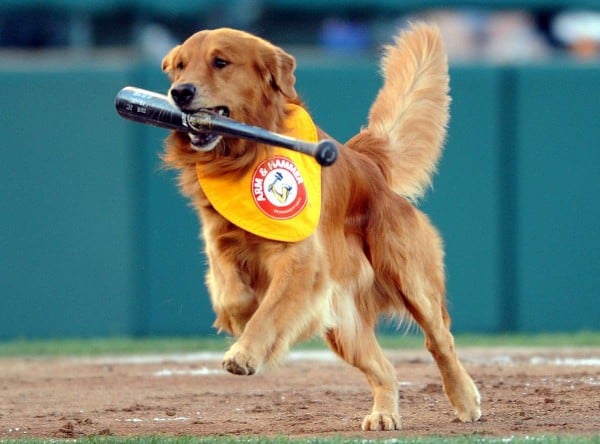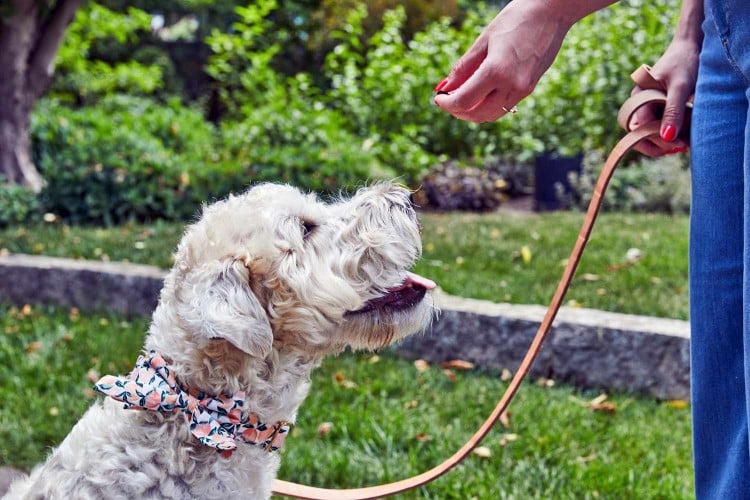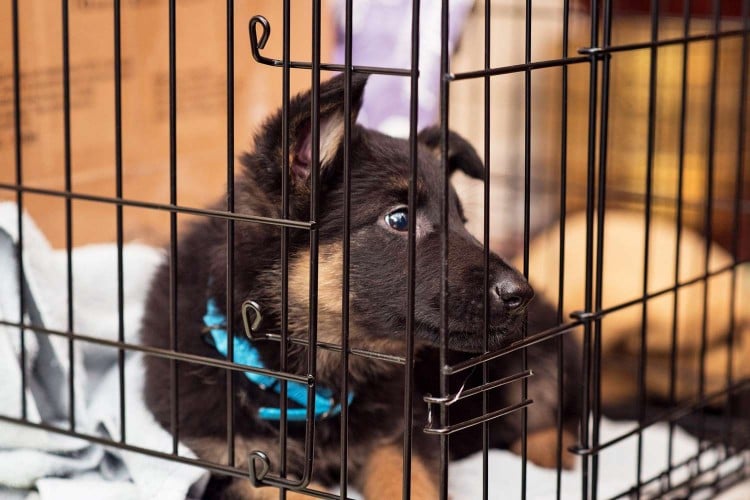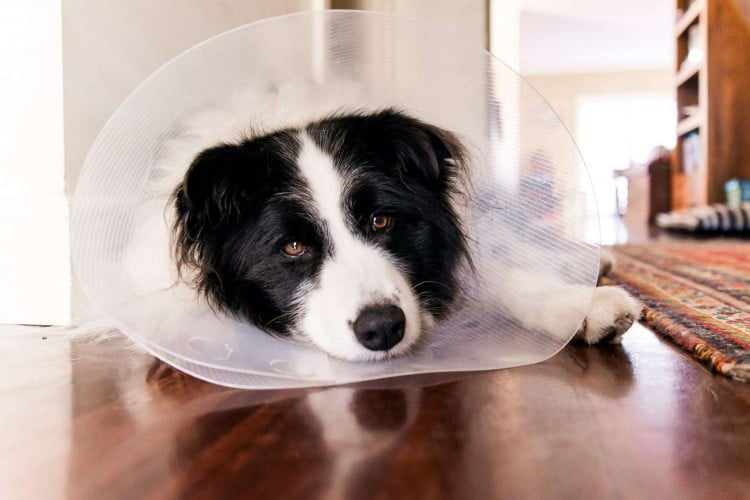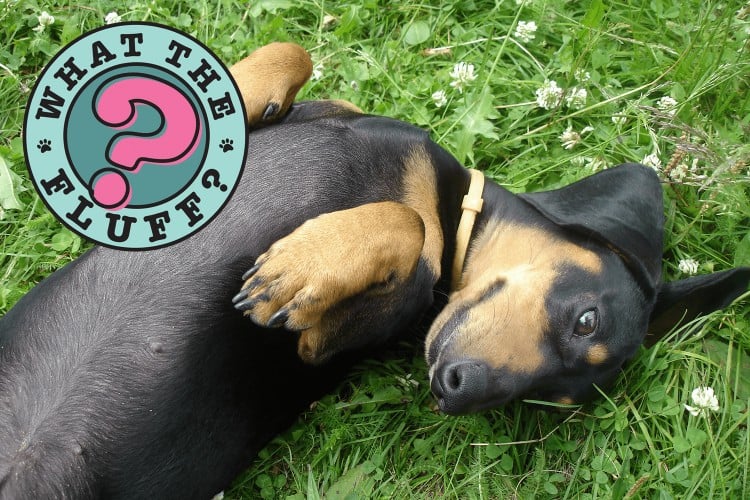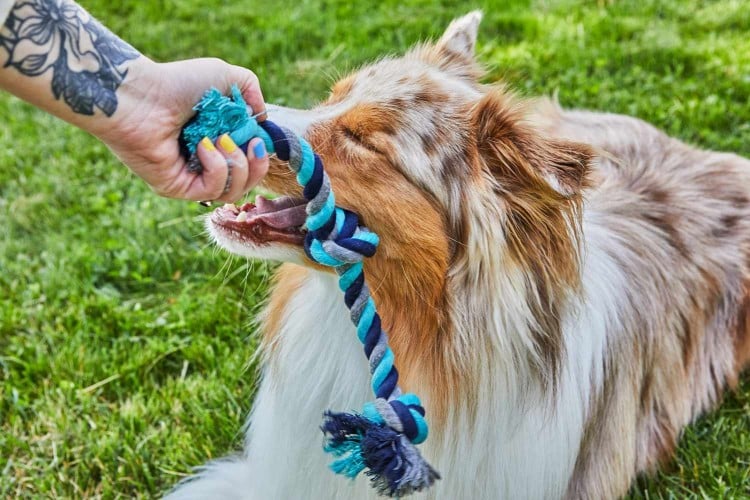
I like to think of "drop" as an opportunity to teach my dog to trade with me. Give me what you have and you can have this tasty treat instead! This way my dog learns that giving up something (maybe even something dangerous to them) or better yet, sharing with me, is always an opportunity for reinforcement. Versus me just taking away something from them they want (being a bully). "Drop it" is also a useful cue to have when you want to teach any dog to fetch or play more fairly with their beloved Frisbee.
Be sure to not confuse the "drop" cue with a "leave-it" cue. A leave-it cue should only be used when your dog encounters something they want to engage with; it's your cue to tell them to ignore something or not to touch something. A "drop it" cue is used when your dog already has something in their mouth that you would like them to put down, like dropping a ball during a game of fetch or giving you the sock they found under the couch.
Teaching your dog to drop it is pretty simple but it's all about being consistent, and starting with items that are easy for your dog to offer up or let go of (like old toys). As they gain more experience with the "drop" cue, your dog can begin to understand how to drop items that may have more value to them, like food dropped on the floor or gems from the dirty laundry basket.
Don't expect your dog to be perfect at this right away. Giving up interesting pilfered goodies is harder to do than giving up a toy they are getting bored with anyway. It takes patience and practice and lots and lots of positive reinforcement.
Things You Need Before You Start to Teach a 'Drop It' Cue
High-Value Treats
High-value reinforcers are things your dog really loves and only gets during training sessions. Nibbles of dog-safe human foods like cut up hot dogs or store-bought training treats that have a strong, (usually stinky) scent are good options.
A Marker
A marker (or bridging stimulus) is a sound or hand signal that pinpoints the exact moment your dog did something that earned them a reinforcer (the treat). A clicker is a useful tool to use as a marker, but you can also just say a word like "yes" or "good" or a thumbs up hand signal. Just make sure you pick one and use it consistently!
In this guide, we will use a clicker and wherever we say "click" you will use your marker. Mark the behavior the second you see it. The more accurate and quick your mark is, the more effective your teaching becomes.
3 Fun Steps to Teach Your Dog to 'Drop It' on Cue
01 of 031. Initiate a Game
Grab a bunch of your dog's favorite treats and sit down on the floor. Engage them with a toy they like (but are not obsessed with!) and start a game of easy tug. Wait for your dog to drop the toy from their mouth, and the second they do mark and give them a treat. Then, show them another treat but toss it a few feet away so that you can pick up the toy. Initiate another game of tug with them. Repeat.
Pro Trainer Tip: If your dog does not drop the toy, you can show them a treat in your hand to encourage them to let the toy go. Be careful not to rely on this though, fading it out quickly. Otherwise the treat in your hand becomes a bribe instead of a reinforcer.
02 of 03
2. Add a Verbal Cue
While tugging the toy with your dog, pair the dropping of the toy from their mouth with your cue. Right before your dog is about to drop the toy say the cue "drop it," and the second they do mark and reinforce. Repeat.
It's important to practice this cue in other locations where your dog will play or investigate things on the ground. Go in your backyard or a different room in your house, but be sure to choose spots where other distractions are at a minimum.
Pro Trainer Tip: Try hard to not repeat the verbal cue more than once or bribe them with a treat. If your dog does not drop the toy when you say the cue, simply let go of it and wait, being ready to mark and reinforce the second they drop it from their mouth. Go back to step one and practice a few more times.
03 of 03
3. Practice Using Other Favorite Toys as Reinforcers
If your dog loves their toys you can use them are reinforcers. For dogs that want to grab anything soft and squishy (like those socks no one has yet to claim and pick up), it's important to teach them to drop or trade like-items, exchanging something you don't want them to have for something they can have (and ideally love). For instance, if your dog grabs a shoe left by the door and you don't have treats nearby you can trade the shoe for a nearby Frisbee, squeaky toy, or plushy. Use these steps to practice the "drop it" cue and mark and then immediately offer an opportunity to play with another toy or with a game of tug or fetch.
Pro Trainer Tip: Create variability with the reinforcement by offering a treat sometimes and other times offering a toy or game so that your dog is always engaged and excited to drop the thing they have in favor of another fun opportunity.
These Are the Best Outdoor Dog Toys for Endless Backyard Fun
What to Avoid When Teaching the 'Drop It' Cue
As with anything you want to teach your dog, there are some things you really need to avoid doing.
Don't Raise Your Voice or Scold
Don't yell the cue at your dog or use a harsh, demanding tone. Your dog should never be punished for using their nose and mouth to do what dogs do. Using the cue as a threat poisons it and makes it less likely to be effective, only teaching your dog to run away from you with something in their mouth—or worse, to guard it (resource guarding). We want to teach our dogs that offering the behavior of dropping something from their mouth equals getting something else great, making it something they want to do.
Don't Chase Your Dog
Dogs love an opportunity to play chase and there is no better time to run away from Mom or Dad than when you have the remote in your mouth! Chasing your dog will only encourage them to run away from you any time their muzzle finds an interesting treasure they want to keep hidden.
Always make sure that training your dog new skills and cues is quick and super fun. Engage your dog when they are most likely to be in a playful mood and keep tug games, and teaching opportunities, short and easy. And remember! Reinforce, reinforce, reinforce!
